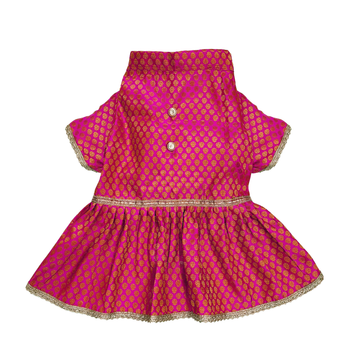Dalmatian

Dalmatian
| BreedHighlighs: |
| The Dalmatian is a large purebred known for being hostile, vigilant, agreeable, intrepid, dynamic, amiable, independent, intelligent, trustworthy, flashy, and playful. The most common colors for Dalmatians are black, brown, and white. |
| Weight: |
|
25 kg |
| Height: |
|
Male:58-61 cm Female:56-58 cm |
| Life Expectancy: |
| 10-15 yr |
| Litter Size: |
| 6-9 |
| Breed Appearance: |
|
The Dalmatian is a large, strong, muscular dog. The skull is about as wide as it is long, and flat on the top. The muzzle is about the same length as the top of the skull. The stop is moderate but well defined. The nose can be black, brown (liver), blue or a dark gray that looks like black. The teeth meet in a scissors bite. The medium-sized round eyes are brown, blue or a combination of both. The ears are set high, hanging down, gradually tapering to a rounded tip. The chest is deep. The base of the tail is level with the topline and tapers to the tip. The feet are round with arched toes. Toenails are white and/or black in black-spotted dogs and brown and/or white in liver-spotted dogs. The short coat has fine dense hairs. |
| History: |
|
The breed had been developed and cultivated chiefly in England. The first unofficial standard for the breed was introduced by an Englishman Vero Shaw in 1882. In 1890, with the formation of the first Dalmatian Club in England, the standard became official. When the dog with the distinctive markings was first shown in England in 1862, it was said to have been used as a guard dog and companion to the nomads of Dalmatia. The popularity of the breed's unique coat spread like wildfire so much that it was distributed to virtually each and every nook and corner of the European continent in 1920 and onwards. Its unusual markings were often mentioned by the old writers on cynology. |
| Originally: |
|
A dense cloud of mystery has engulfed the subject of the origin of this breed. Spotted dogs are known throughout history in Africa, Europe and Asia. The breed may be related to the Pointer. Traces of spotted dogs are found in Egyptian bas-reliefs and Hellenic friezes, so it is certainly a primitive breed. In 1700, a dog known as the Bengal pointer, similar to the Dalmatian, prevailed in England, calling into question the Dalmatian’s Yugoslavian origin. Some argue that the Dalmatian is a Croatian breed. |
| Currently Used As: |
|
Movie dogs, Guard dogs also |
| Training: |
|
Training Dalmatians is all about rewarding decent conduct and eliminating unceremonious habits. The Dalmatian breed is very intelligent and that sometimes can make training easier said than done. The key to fruitful and prompt training outcomes is being confident, consistent and devoted throughout the span of each training session. |
| Health&Care: |
|
This breed is notorious for alarmingly high deafness levels; about 10-12% are born deaf. Dalmatian puppies should be BAER-tested for deafness at about 6 weeks old, and totally deaf puppies should be spayed or neutered. While the breeding of deaf puppies should be avoided, it is very possible to raise a well-adjusted deaf dog. They can be prone to urinary stones, as uric acid levels in Dalmatians are, in general, higher than in any other breed, sometimes trigerring urinary blockage. They can also fall prey to skin allergies, such as synthetic fibers in carpets and upholstery. |
| Living Condition: |
|
A Dalmatian is not an ideal dog for apartment dwellers unless it can be taken out for a brisk walk or run several times a day. They are very active indoors and will do best with at least an average-sized yard. Not suited to living outside in cold climates. |
| Excersie: |
|
This is a very energetic dog with enormous stamina. They need to be taken on daily, long, brisk walks or jogs where the dog is made to heel beside or behind the human leading the way forward, as instinct tells a dog that the leader leads the way, and that leader needs to be the human. In addition, it needs plenty of opportunity to run, preferably off the leash in a safe area. If these dogs are allowed to get bored, and are not walked or jogged daily, they can turn ballistic and start to display a wide range of behavioral problems. They love to run! |
| Grooming: |
|
The Dalmatian sheds all year round but does copiously only twice a year. Brush frequently to help manage the constant shedding. They do not have a doggy odor and are said to be clean and even avoid puddles. Bathe only when necessary. |
| Pros: |
|
Merrymaking, zealous! Lively, active! Ideal family dog Intelligent, obeisant, quick to learn People-oriented, fabulous house dog and a reliable companion for all sorts of indoor and outdoor environments. Natural affinity for horses, adores hiking, jogging, biking and rollerblading with owner. |
| Cons: |
|
May be extremely peppy and sprightly with young children. Small children shouldalways have adult supervision when playing with any dog. Need gentle, motivational obedience training as early as possible. Not suitable for people who will not set clear limits.Not a yard/kennel dog - needs to be made an inalienable part of the human family. |












